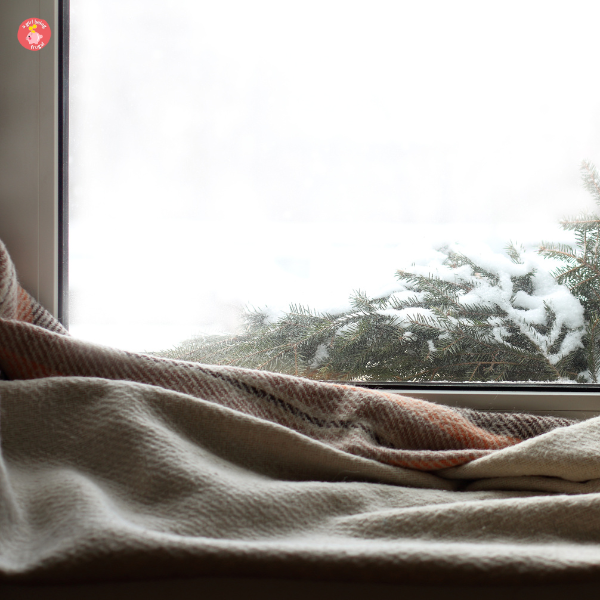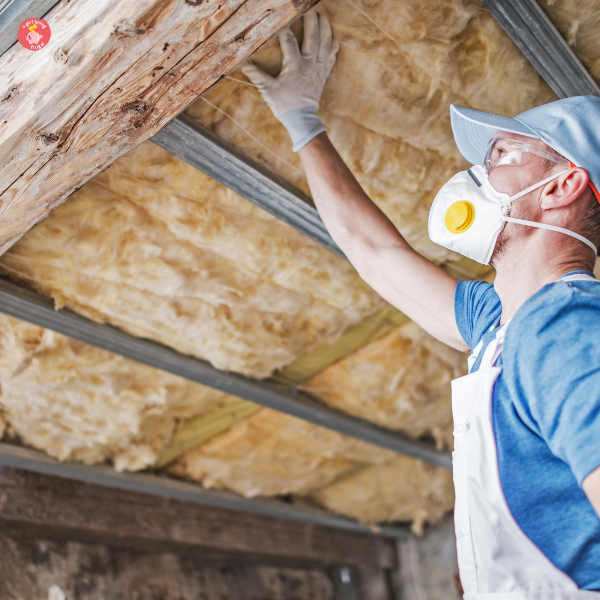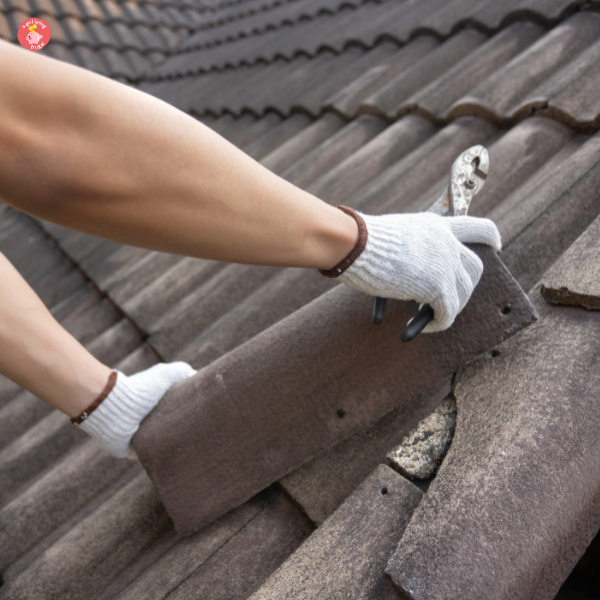Trying to find ways to combat the chilling winter drafts and keep cozy without breaking the bank? We’ve got you covered – with tips that will not only help your house hold heat but also save your hard-earned cash in the long run.
Americans spend an average of approximately $2,200 per year on heating and cooling costs. This expenditure accounts for nearly half of a typical household’s energy use, with specific estimates ranging from around $1,025 to $1,202 for the winter heating bill. Additionally, the annual spending on gas and electric household usage is reported to be approximately $2,284, out of which around $1,346 is allocated to space heaters or air conditioning.
Furthermore, electric heating costs in the US are estimated to be roughly $838 annually, while natural gas heating costs are projected to rise by approximately 34%, resulting in bills reaching around $952 for households that utilize natural gas for heating.
3 Tips to Help Your House Hold Heat During Winter
Before we dive into the cost-saving secrets, here’s a little confession: Last winter, my own home felt more like an igloo than a cozy retreat. But, not wanting to spend a small fortune, I embarked on a mission to find the best ways to keep warm on a budget.
Check All Openings for Drafts
First things first, make sure to inspect all openings in your house – windows, doors, vents – that may be letting cold air in. This could be caused by worn-out weather stripping or gaps between panels.
To detect drafts around windows and doors, simply hold a lit candle near the frame; if it flickers, there’s most likely a draft. To fix this, you can easily replace the weather stripping or use a draft stopper along the bottom of doors to block out cold air.
Embrace the Power of Insulation
Inspecting your home for drafts can be a game-changer when it comes to staying warm. Ask yourself, “When was the last time I checked the attic insulation?” Insufficient or old insulation can let heat slip right through the roof! Roll up your sleeves and check that attic insulation – it’s like putting a warm hat on your house to prevent heat from escaping.
Also, do you remember those cozy thermal curtains you admired at your friend’s house? They’re not just for show! Hanging them up can actually create a barrier against the cold seeping through your windows.
Becoming a Draft Detective
Now, let’s turn our attention back to those sneaky drafts you might find in windows, doors, and vents. What’s the secret to catching them red-handed?
- Look for Visible Damage: This one’s straightforward – any cracks or gaps are clear invitations for cold air.
- Feel for Airflow: On a windy day, place your hand around window and door frames, electrical outlets, and vents to feel for moving air.
- Use the Incense Stick Test: Light an incense stick and hold it close to suspected areas. Watch the smoke – if it waivers or is blown into the room, bingo, you’ve found a draft.
- Check the Locks: Windows or doors that don’t close properly or have loose locks can also let in cold air. Make sure everything seals tightly.
Remember, each draft you find and fix will work wonders to keep your home toasty and reduce those heating bills. So go on, channel your inner Sherlock Holmes, and track down those drafts — your wallet (and toes) will thank you later. And when you’ve nailed down all those pesky drafts, why not reward yourself with a hot chocolate by the fireplace? Here’s to a warmer, snugger winter season!
Check Your Insulation Levels
Another important factor to consider is the level of insulation in your home. Insulation helps keep heat inside and prevents cold air from seeping in, making it a crucial element in keeping your home warm during winter.
There are various types of insulation available, such as fiberglass batts, blown-in cellulose, rigid foam boards, and spray foam. The type you choose may depend on your budget, location, and personal preferences. However, it’s important to ensure that your insulation is installed properly and evenly throughout your home.
If you’re unsure about the level or quality of insulation in your home, it’s best to consult a professional who can assess your current insulation and recommend any necessary improvements. This initial investment can save you money in the long run, as proper insulation can greatly reduce heating costs.
Evaluating Your Home’s Insulation Properly
Want to know my secret for making sure my home is as snug as a bug in a rug? Insulation checkup! Seriously, it might not be the most glamorous weekend chore, but it’s definitely a top contender for cutting those heating bills. Wondering where to start? Check out this list:
- Attic antics: If you’ve got an attic, pop your head up there and see what’s going on. What you’re looking for is even coverage and no bare spots. You know, kind of like when you’re frosting a cake, no one wants a slice without icing!
- Wall wisdom: How thick is your wall insulation? If you’re not sure, an infrared thermometer can reveal areas where there might be less insulation by showing temperature differences. It’s like having X-ray vision!
- Basement basics: Don’t forget about your basement! Make sure the insulation down there isn’t damp or moldy – that’s a definite no-go.
- Window peek: Quick question – ever just sat near your window and felt a chill, even when it’s closed? That could be a sign you need better insulation around those window frames.
Getting to grips with your insulation might not be thrilling, but it’s important. And hey, once you’re done, celebrate your savvy savings-forward move with a cozy evening in! Remember, a well-insulated home isn’t just a seasonal joy; it’s year-round comfort and efficiency.
Maintain Your Roof
It’s easy to forget about your roof, especially during the winter when it’s covered in snow. However, maintaining your roof is crucial for keeping your home warm and preventing any costly damages down the line.
Make sure to clean out gutters regularly and remove any debris that may be blocking proper drainage. This will help prevent ice dams from forming on your roof, which can lead to leaks and water damage.
It’s also important to keep an eye out for any missing or damaged shingles, as these can allow cold air and moisture into your home. If you notice any issues with your roof, it’s best to call a professional for repairs.
Prevention is Key
As the old saying goes, prevention is better than cure. This is especially true when it comes to your home’s insulation and roof. By regularly checking for drafts, maintaining proper insulation levels, and keeping your roof in good condition, you can save yourself from potential headaches and expenses in the long run.
Is Your Roof Letting the Cold In? Here’s How to Tell
Have you ever wondered if your roof is secretly plotting against your cozy winter evenings? Well, worry no more! Checking if your roof is conspiring to let the chill in is easier than you might think. Here’s a quick checklist:
- Visual Inspection Adventure: Grab some binoculars and scan your roof for missing, damaged, or worn shingles—it’s a bit like a treasure hunt, but instead of gold, you’re after peace of mind.
- Indoor Rain Check: Notice any mysterious stains on your ceilings. That could be a telltale sign of a roof letting water sneak in, which often means heat’s making an escape, too.
- Touch Test: On a cold day, touch your ceiling. If it feels unusually cold, your roof might not be holding up its part of the bargain when it comes to insulation.
- Roof Age Reality: If your roof is older than your favorite vintage leather jacket, it might be time to consider whether it’s still up to the task. Roofs have expiration dates, too!
- Attic Inspection Party: Pop into your attic (it’s not just for storage!) and check for daylight coming through the roof boards or for any signs of water damage.
Wrapping things up, let’s not forget that your home is your sanctuary, especially when the winter winds blow. So, here’s my final nugget of wisdom for you: help your house hold heat as if it were your cherished cup of hot cocoa on a snowy evening. Start with those drafts, buff up the insulation, and pamper that roof! Imagine the satisfaction of sinking into your couch, knowing you’ve turned your home into a fortress against the cold – without splurging on your energy bill.




